Support
You can support this site without any cost or disadvantage at all by clicking this link to Amazon or the one on the left before buying anything – be it underpants, a cupboard, a TV, a pen, a lens or a camera. Amazon is the only shop worldwide, I’m really satisfied with to a 100%, so I have no caveats advertising them. Of course, you can also directly donate a small amount of money, e.g. the amount you would have spent for a magazine, with the button on the left.
Tokina RMC 500mm 1:8.0 Mirror
A manual focus, ultralong mirror-tele from the film era, very well made and extremely compact, what's the whole thing behind mirror-lenses.
It was surely made for several major mounts of that time, but mine is for Minolta MD and so normally would not be adaptable to Canon EF (EOS) today without using an adapter with glass elements or loosing infinitiy-focus, because the flange focal distance of the Minolta mount is shorter than the one of Canon EF. But I was lucky and Tokina chose to use quite massive tolerances and so it still works with my unprofessional DIY - solution which reduces the added space to an absolute minimum (just the 1mm of the bajonet itself, indeed).
These mirror lenses went out of fashion some time ago, even though they seem to see a bit of a renaissance in the last years. The real advantages are the nearly complete abscence of chromatic aberrations and above all size and weight, while the main disadvantages are speed, a missing aperture and the "special" bokeh they produce. Have ever seen a real 500mm lens live? I would never buy one, it's completely absurd that I would ever bring one to a real location. I don't use this one very often, too, but at least it's a bit more realistic.
At the time when this was new, there were such lenses from most manufacturers and today there are several others and 500mm was the most common focal length for this concept, as was f/8 in regards to speed. This Tokina in abolute terms is really good, even if not extraordinary, optically and, what's not the case with all mirror-lenses, nearly reaches a real f/8 in terms of light-gathering, while for example a Samyang 500/6.3 I've tested once, was hardly any faster in reality.
The main problem is handholding a 500mm lens, not sharpness.
COMPATIBILITY
As mentioned above, it depends on the mount it was originally sold in. Olympus OM, Pentax, Nikon and Contax/Yashica are easily adaptable to EOS. Of course, Nikon- and Pentax-versions work well on Nikon and Pentax - bodies, as do Minolta-versions on Sony. For other adaption-options, please search the internet - it depends on the flange focal distance: If the distance between the sensor/film was higher than it has to be for your actual body, adaption is trivial.
If you are planning to adapt a mount-version that originally would not work: These long lenses and mirror-lenses in special are often designed with quite high tolerances regarding infinity-focus, which among other reasons was done to deal with temperature-differences and the physical effects of changing the used material's dimensions, which have a relatively high influence here due to the extreme relations of size and focal length. This is, why I gave up my initial plan to take the Minolta mound completely off and find a way to mount the Canon one, but could adapt my Tokina to Canon EF with my totally unprofessional DIY-solution: I took a bajonet, the pure mount, of an old Canon EF lens, put it on / over the Minolta MD mount and drove in the screws. The Minolta mount is so small, that the Canon mount fits completely on top, with the Minolta mount being inside of it. The screws hardly have enough space to fit besides the original mount and so, even without designated threads, hold the mount perfectly tight. I held the lens down by the Canon mount and shook it like crazy and it didn't move a bit. Just for safety reasons I added some epoxy around it, but it even wouldn't have been necessary. Of course it would be a lot easier to find an adapter from MD to EF that doesn't have any glass elements and try, but in Germany at that time, there seemed to be only the ones with glass elements, which I wanted to avoid, because I feared a massive drop in performance due to the additional (cheap) optical element.
PRICE
This lens is quite hard to find, as most Tokinas are. Minolta-versions are cheaper than others, because they are harder to adapt. I have bought mine several years ago for next to nothing, because the back-element has an production failure, there's an area on the side of it, where the coating seems to be missing. Luckily, it's outside the used area, which I found out by putting a piece of "Post-it" there and it had no effect on the pictures. But of course it was sold as defective and I was lucky. That's also the reason, why I have bought a Minolta-version at all: It was one of those bids, where I thought "OK, for this I'll have to take it, so I'll bid it, but it won't ever sell for this." I think it was around € 10,- or € 11,- or something like this including delivery.
But even mint samples sell for 40,- or 50,- today regularily.
ACCESSORIES
Mine came with the complete original accessories, which consist of a quiver or case, manual, a metal shade, a rubber front cap, back cap of course, and a fake-leather pouch with three filters and a tools to change it.
While it has a filter-thread in front, this seems to be only for the shade, because the plastiv-part in the middle prevents filters from being mounted. It takes rear filters. An unusal thing is, that, at least according to the manual, there always has to be a filter mounted because it is calculated this way, so I leave the original Skylight-filter on.
The full-metal shade screws in and can be mounted in reverse for transportation. This is one of the few lenses I really use with the shade, because 500mm is so long, that you a) can't take a hand off the camera to shield the lens and b) can't simply change the angle to avoid flare. By the way the cap only really sits tight with the shade mounted in reverse direction and the lens can still be focussed then, you simply turn the shade and it actuates the focus-ring.
Thinking about what it is: GREAT.
MECHANICS
Made in Japan.
Metal everywhere, the only thing not made from metal is the rubber on the focus-ring and the thing in the middle of the front.
The markings are engraved and filled with paint.
Not the slightest hint of play or wobbling in any part, nothing has only a tenth of a millimeter play.
The focus-ring is strongly dampened, how it has to be in regard to the ultra-thin depth-of-field at 500mm.
GREAT.
ERGONOMICS
Again, you have too keep in mind what it is and thinking about any other 500mm lens, this lens is great. This is a very small lens indeed, about as big as the Sigma 17-35mm and smaller (but heavier) than the Canon 28-135mm USM. Size DOES matter, also see Lenses: What's important? I simply have no need for a "real" 500mm lens, because I simply wouldn't bring it anywhere.
The focus-ring actually covers most of the lens and is located on the front. It sits perfectly there, enabling you to support the lens-camera-combination on the lens and still make small focus-corrections with the whole supporting hand.
The focus-path is very wide spread, actually over the whole lens, you can turn it about 355 degrees from infinity to MFD of 1.5m and while it is already quite spread on the wider distances, about two centimeters between infinity and 15m, it progressively spreads towards the near end, with three centimeters between 1.5m and 1.7m. This is great, because depth-of-field is extremely narrow at 500mm.
The lens extends a tiny bit, a few millimeters, when focussed, and the front rotates, but remember, theres no real possibility to use filters in front. And why should you? Polarizers are silly with an f/8 lens and a grad at 500mm? I can't imaginge this to be any useful, too.
There is a focus-scale without infrared-focus-indices or depth-of-field-scale.
OPTICS
Optics of this Tokina are a lot better than expected.
I'll start with something a bit unusual, because it normally is not overly relevant: A problem with all lenses is, that the aperture, or better the "f-stop", given is only a calculated value, while is does not necessarily always mean, that it reflects the exact capability to gather light. The latter is called the "T-stop", you sometimes see on lenses optimized for video. This is quite logical, because every glass-element has a light transmission of 99% or more, but never 100%, there's always a bit of light lost. So the difference is bigger for more complex lenses with more elements, while 50mm lenses often have a T-stop nearly identical to the F-stop. For example Samyang's cine-line has the T-stop given, one F/2.8-lens for example is a T/3.1. As mentioned, this isn't overly relevant normally, because a) the differences between F-stop and T-stop are relatively minor and b) the exposure is metered through the lens, so noone ever recognizes. But in mirror-lenses, there is something, that normal lenses don't have: The mirror. A mirror doesn't simply have to let the light through, it has to reflect it. Of course, this looses more light, than a simple glass element. The manufacturers try to deal with this by using extremely high-tech mirrors, e.g. covered with real polished silver, but the light-loss is still always bigger than in a good normal lens. I have tried the Samyang 500mm f/6.3 mirror-tele for a week or so and compared it to my Canon 75-300mm. The result was, assuming that the Canon's F-stop was also it's T-stop for simplicity, that the Samyang seemed to be slower than f/8. This Tokina seems to be something around a T/9 lens (or better: like a T/9 Canon 75-300) and so is only marginally slower than the Samyang, while being a whole lot smaller.
The minimum focus distance is 1.5m, which doesn't sound good, but actually is near macro at 500mm. You can take very nice close-ups of flowers and similar with this lens with no depth-of-field:

Distortion is never visible, nor is vignetting. It doesn't have an aperture, so there are no blades, of course. It doesn't make light-stars, but circles.
I have no information on this lens' usability for for infrared-photography, sorry.
It's color reproduction matches my other lenses.
Lateral CAs (purple/green fringes along high-contrast edges) are never visible. This is a characteristics of mirror-lenses.
Another characteristics of these lenses is "circles". Due to the circular mirror with the "hole" in the middle, these lenses produce out-of-focus-highlights that look like circles and a very nervous bokeh in general. This may be funny, but isn't really nice. You have to decide for yourselfs, if and how much this bothers you.
Here is a quite extreme example (look at the front):
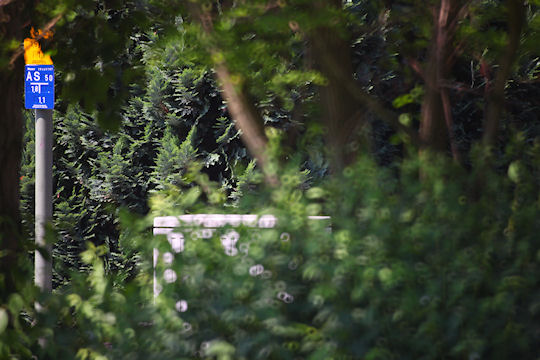
Normally it looks more like this:

A lot less disturbing, but still nervous. Here's a crop from the above:
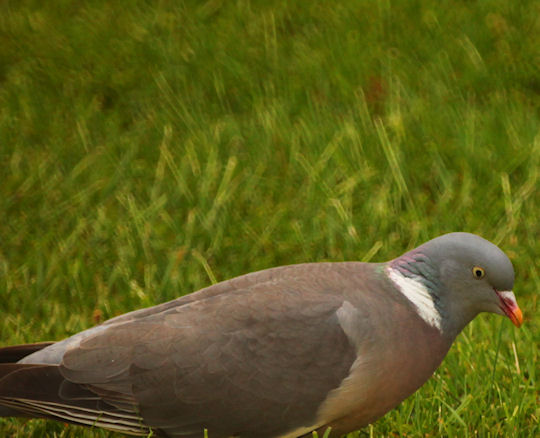
But on the other hand, you can't do this with a shorter lens:


THIS is playing with depth-of-field. For depth-of-field, focal length is much more important than aperture, you see the evidence above.
Sharpness is one of the most overrated qualities of lenses. That being said, it is a main point of critizism versus all mirror-lenses in general in all kinds of comments on the web. But either these opinions are simply wrong or bad photographers, who don't manage to hold such a lens still and focus it properly, or this Tokina is an exception - it actually is sharp, it's even good! Maybe not extraordinary in absolute terms, but really good still. It only has a little bit lower contrast than other good teles.
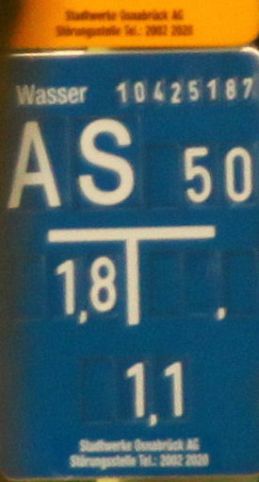
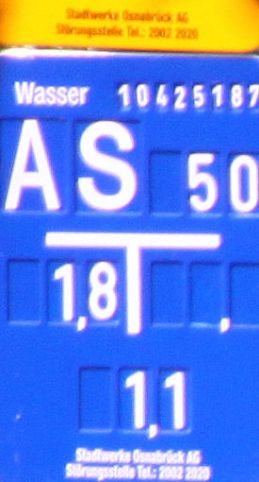
Both 100% crops from full 22MP JPGs, 5D Mark II, left center, right corner. Excuse the different lighting, I never have enough motivation to wait for ideal light when taking boring test-shots...
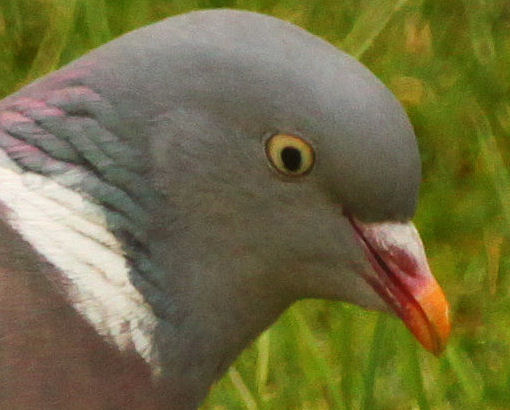
Another 100% crop from a 22MP JPG, 5D Mark II.
My sample of this lens is centered well, with no significant difference recognizable between the four corners at any setting...
Flare is surprisingly well controlled, but when it finally flares the mirror reflects the sun over and over and the image completely "blows out". That's the reason to keep the shade and use it - you have no chance of shielding the lens with one hand and hold 500mm still enough for a sharp shot and with 500mm you also have no chance of changing the angle away from the sun... The ghosts it produces are circles, of course.
If you are like me and just have fun with a photographic tool that gives you results nothing else does, but can't or don't want to spend a fortune for the original solution, a mirror lens may be nice and if so, this Tokina certainly is great.
If you need it? Well, you have to answer this for yourselfs, but if so, then probably an autofocussing zoom is better for you.
But if a "real" 500mm is not an alternative for you, it all comes down to one question I think: Bokeh vs. focal length and size. If the Bokeh bothers you on a level, that prevents you from using this lens, even the € 40,- you'll pay is too much. Personally, I like to have the focal length in this small and light package and can surely live with the disadvantages in exchange.
Alternatives
There are several mirror-teles, but I have never tried another one. There are 300mm f/6.3, a 500mm f/6.3 by Samyang, which I can't recommend, because in reality it is hardly any faster, but a whole lot bigger, 800mm f/8 and f/10 lenses and even a russian 1000mm seems to exist. I find it all quite interesting, but can't say anything about 'em. I only know, that the Tamron 500mm f/8 is said to be among the better mirrors as well.
You buy and own this lens only to have it. There's no serious reason to buy it.
Und Samsung ist ja doch eher ne recht coole Marke, da lohnt es sich ja zumindest mal zu fragen…
A word about supporting this site
I don’t run this site to earn money. I have a real job to earn my living with, a completely normal job. Since everything I write about here I have bought myself, for myself and with my own money from normal shops or ebay-sellers to actually use it, how much and what I am able to write about , depends on the amount of money that I can save and invest in equipment with good conscience. I share all this, because I want to, not to sell it. But when you find this helpful, maybe even as helpful as buying a magazine or book, of course you can support me, if you want. Your benefit is, that you help me being able to afford things to write about here.
You can use the “Donate” – button on the left to directly send a small amount of money (or a big amount, if you insist). You don’t need a paypal account to do so, every method is possible. If you decide to donate 99 cents, I’m thankful for it, because 10 people being as kind as you, make one new filter tested! The default currency is US $, but it works well with € or nearly any other currency, too.
But even more simple and without any cost or other disadvantage at all it is, to simply use this link to Amazon (or the one on the left) before buying anything there. For you it’s exactly the same as going there directly by typing the web-adress in your browser, you just klick this link first! It doesn’t matter, what you buy or where in the world you buy it, be it underpants, a pen, a cupboard, a lens or a Leica M9, be it in Germany, the USA, the UK or Australia: Amazon’s servers simply realize, that you came there through the link on my page and I get a small percentage of anything you buy FROM THEM. There’s absolutely no cost or other disadvantage for you, Amazon simply pays for my “advertisement” through this. I originally didn’t want to ever do any advertising personally. But then I decided to break this rule for Amazon. I’m a completely satisfied customer and buy everything from them. It’s the only shop in the world I would personally and on my private basis really rate a complete 100% in every regard. They have perfect service, even do call you back, answer emails with real, personal writing, extremely fast delivery even on Christmas-day, always perfect and completely new items, are never considerably more expensive than the very cheapest internet-sellers, have an extremely fast refund-system without being picky or having ever displeased me in any way and sell every good I have ever wanted to buy. They work on a completely different level than any retailer I have ever tried, and deliver it directly to me, without robbing me time and money to drive to the city or mall. I wouldn’t advertise them, if I wasn’t convinced, that it is OK to do so.
